History Blog
|
|
|
|
|
Today is Earth Day, and what better way to celebrate than with a roundup of amazing Hudson River environmental history? Read on to learn more about some of the people and organizations that have had a big impact on the health of the Hudson River, and the American environmental movement. 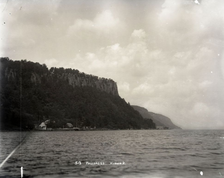 Women in the Forest: Tree Ladies and the Creation of the Palisades Interstate Park On September 22, 1897, Mrs. Edith Gifford boarded a yacht on the Hudson River along with other members of the New Jersey State Federation of Women’s Clubs (NJSFWC) and male allies from the American Scenic and Historic Preservation Society (ASHPS). The goal of this riverine excursion was to assess the horrible defacement of the Palisades cliffs by quarrymen, who blasted this ancient geological structure for the needs of commerce—specifically, trap rock used to build New York City streets, piers, and the foundations of new skyscrapers. All on board felt that seeing the destruction firsthand, with their own eyes, was the first step in galvanizing support for a campaign to stop the blasting of the cliffs. 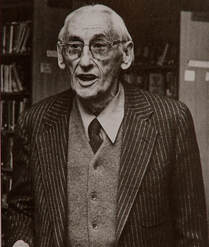 Remembering Theodore Cornu: Unacknowledged Father of Environmentalism Theodore J. Cornu was born in New Jersey to a Swiss mother and father, the latter of whom soon abandoned Cornu, his mother and siblings. The young Cornu demonstrated an affinity for art early on and eventually found his way to a Manhattan engrossing studio, where he soon became employed as an “engrosser” hand lettering diplomas and other commemorative documents. Canoeing was popular amongst his engrossing colleagues, which led him to the boating community in Ft. Washington. His love for canoeing seems to have catalyzed his interest in both the Hudson River and Native American customs. 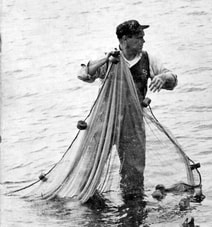 Robert Boyle, Hero of the Hudson If ever a man loved a river, Robert Hamilton Boyle Jr. loved the Hudson — and he was not afraid to shout his love from the rooftops. In his classic text, The Hudson River: a Natural and Unnatural History (1969), Boyle makes his feelings abundantly clear with the book’s very first line. “To those who know it,” wrote Boyle, “the Hudson River is the most beautiful, messed up, productive, ignored and surprising piece of water on the face of the earth. There is no other river quite like it, and for some persons, myself included, no other river will do. The Hudson is the river.” 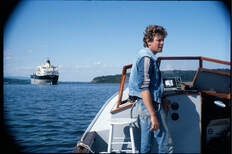 The Origins of Riverkeeper In March 1966, a small group of recreational and commercial fishermen, concerned citizens and scientists met at a Crotonville American Legion Hall intending to reverse the decline of the Hudson River by reclaiming it from polluters. With them was Robert H. Boyle, an angler and senior writer at Sports Illustrated, who was outraged by the reckless abuse endured by the river. At the group’s initial meeting, Boyle announced that he had stumbled across two forgotten laws: The Rivers and Harbors Act of 1888 and The Refuse Act of 1899. These laws forbade pollution of navigable waters in the U.S., imposed fines for polluters, and provided a bounty reward for whoever reported the violation. After listening to Boyle speak, the blue-collar audience agreed to organize as the Hudson River Fishermen’s Association, and dedicate themselves to tracking down the river’s polluters and bringing them to justice. 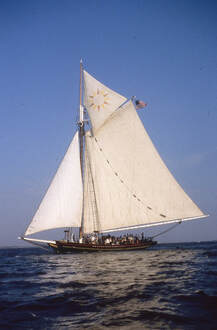 History of the Sloop Clearwater Most people familiar with CLEARWATER know the sloop was the brainchild of the late American folk legend and activist Pete Seeger. Pete was an idealist and an optimist. He once wrote, “There is a little Don Quixote in all of us.” You couldn’t tell him something couldn’t be done. But when you take a closer look at CLEARWATER’s story, it’s a miracle the boat was ever built at all. At the time CLEARWATER was built, the “tall ship revival” was still a decade or two away. Yes, the first Operation Sail brought tall ships from around the world to New York Harbor in 1964, but no one was building new tall ships with one or two exceptions. There were vessels built that were replicas of specific ships, such as the MAYFLOWER II, launched in 1956, and the HMS BOUNTY, launched in 1962 and built specifically for the filming of Mutiny on the Bounty. But to form a new not-for-profit to build a replica of a type of ship -- not even a famous historic ship? Nobody was doing that. Seeger and the fledgling Clearwater organization were ahead of the curve. 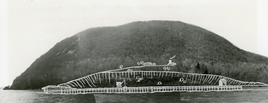 Preservation and Perseverance: Pillars of Scenic Hudson's Grassroots Legacy Scenic Hudson improves the health, quality of life and prosperity of Hudson Valley residents by protecting and connecting them to the Hudson River and the region beyond. Ever responsive to the changing pulse of the region, the ways we achieve our mission are always evolving. Our work today builds upon more than five decades of advocacy and citizen engagement. When Scenic Hudson was founded in 1963, grass-roots environmental activism did not exist as it does today. Con Edison’s plan to construct a hydroelectric plant on the face of majestic Storm King Mountain in the Hudson Highlands changed that. If you'd like to learn more about the role of the Hudson River in American environmentalism, check out our online exhibit "Rescuing the River: 50 Years of Environmental Activism on the Hudson," which is now a traveling exhibit and currently on view at the Newburgh Free Library. If you enjoyed this post and would like to support more history blog content, please make a donation to the Hudson River Maritime Museum or become a member today!
0 Comments
Your comment will be posted after it is approved.
Leave a Reply. |
AuthorThis blog is written by Hudson River Maritime Museum staff, volunteers and guest contributors. Archives
July 2024
Categories
All
|
|
GET IN TOUCH
Hudson River Maritime Museum
50 Rondout Landing Kingston, NY 12401 845-338-0071 [email protected] Contact Us |
GET INVOLVED |
stay connected |
